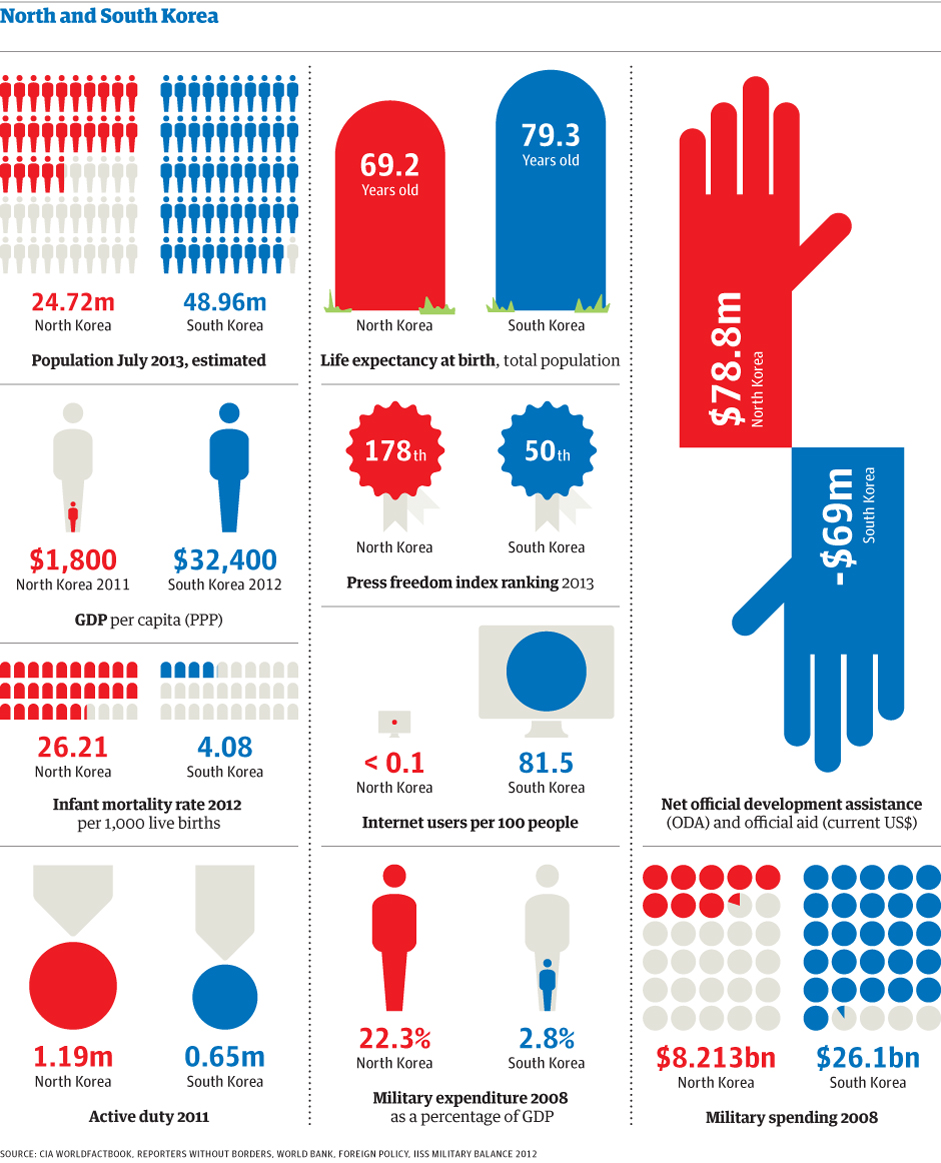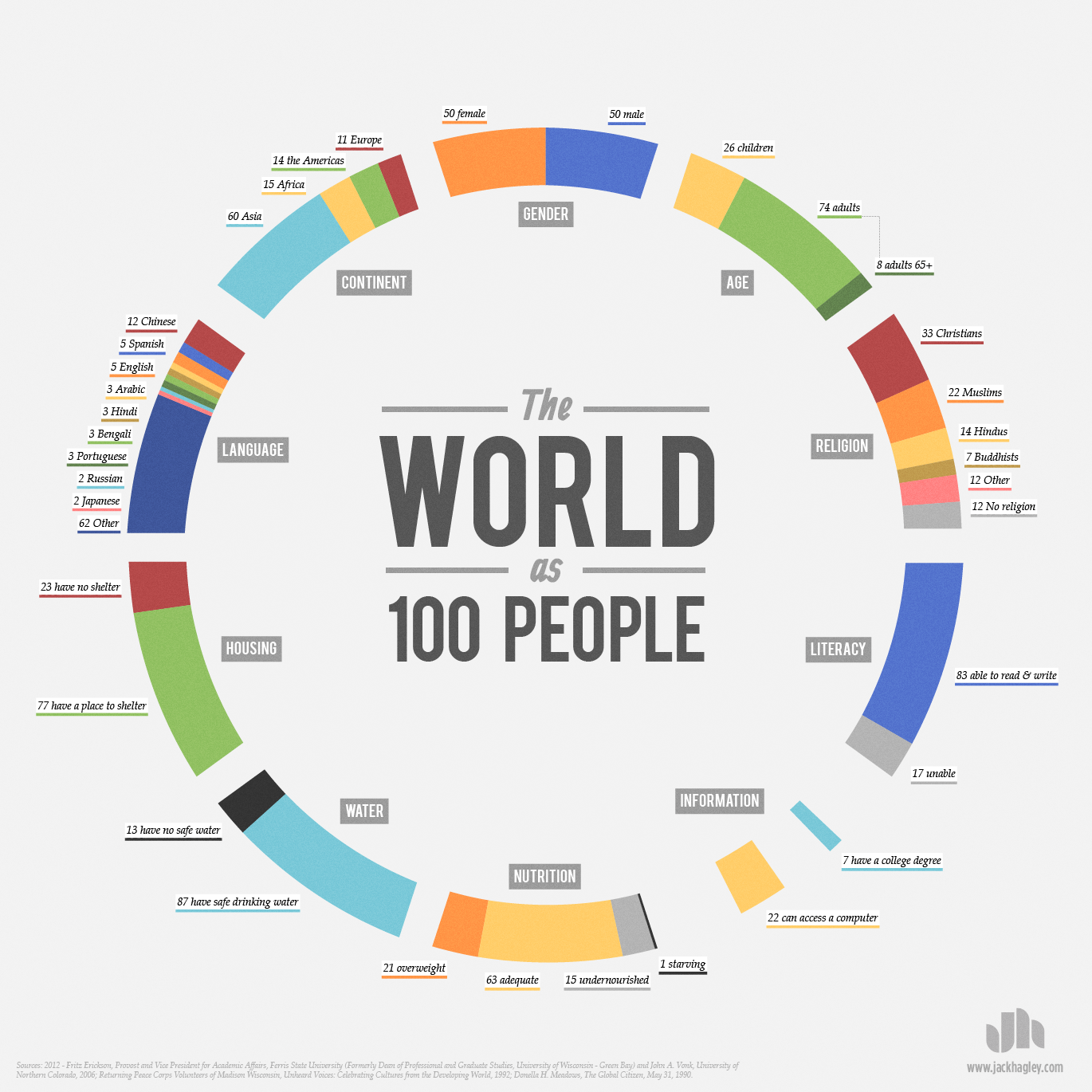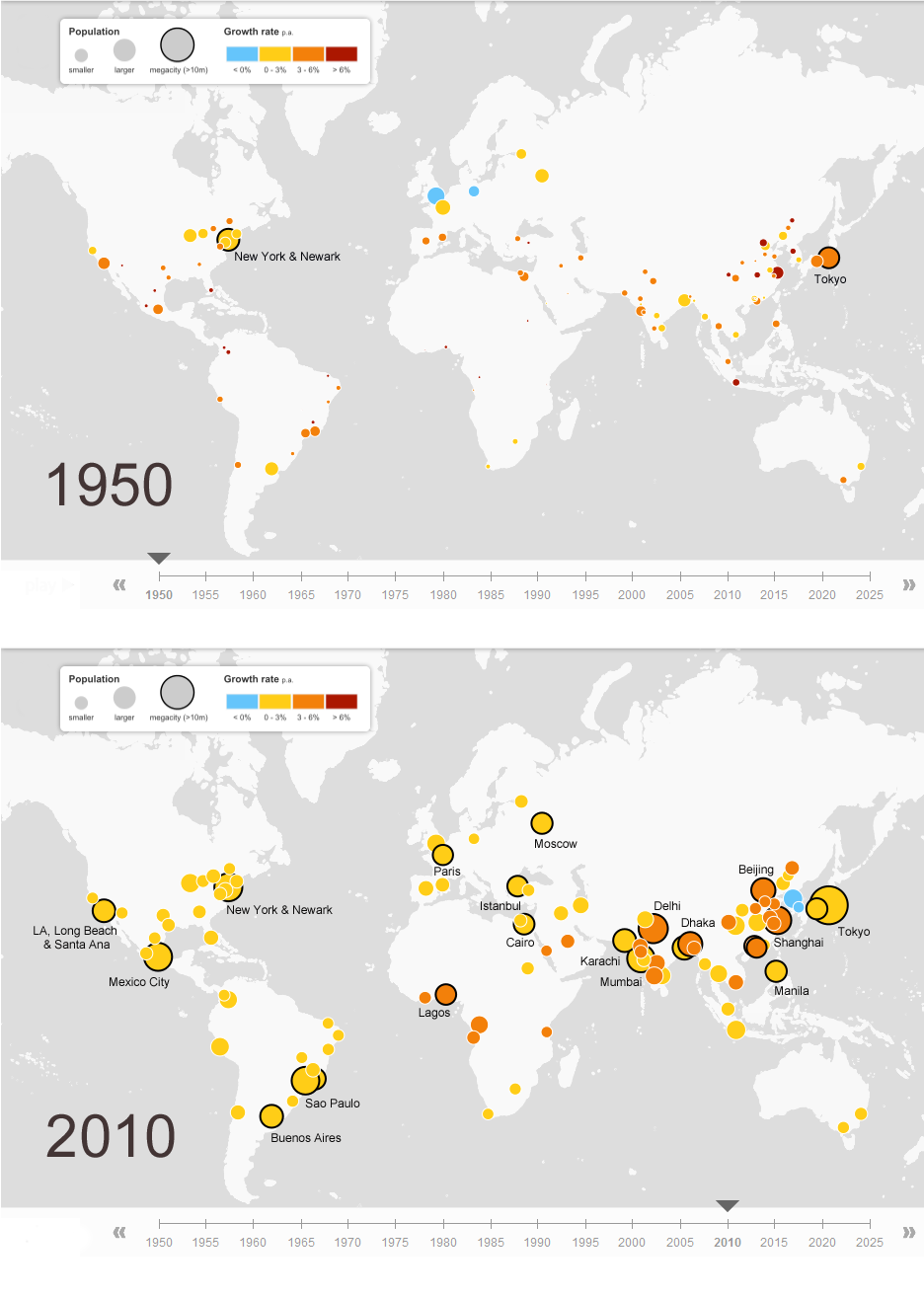World population growth accelerated in the last century. During the twentieth century alone, the number of people increased from 1.5 billion to 6 billion.
In the year 1800 the world’s population had reached 1 billion, with most people living in Asia and Europe. By 1927, 127 years later, the population of the world had doubled, reaching an staggering 2 billion people.
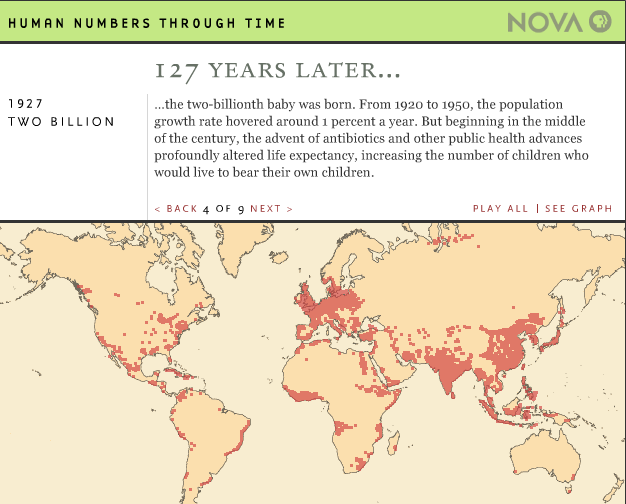 Population growth remained almost the same until 1950 when advances in science and medicine increased life expectancy, specially in developed nations.
Population growth remained almost the same until 1950 when advances in science and medicine increased life expectancy, specially in developed nations.
The world’s population reached 3 billion inhabitants by 1960, 4 billion by 1974, 5 billion by 1987, 6 billion by 1999, 7 billion by 2011.
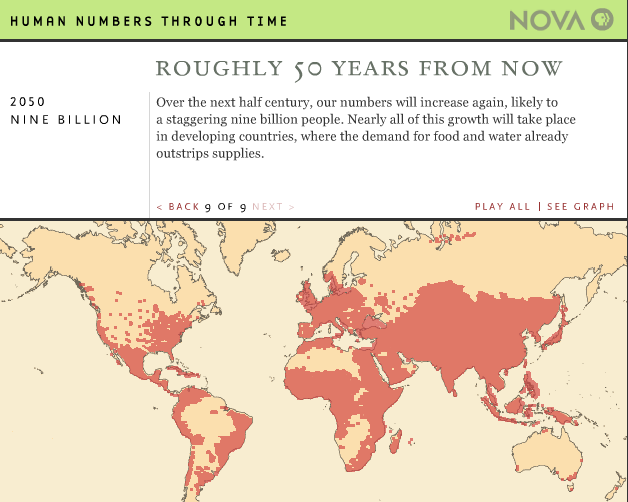 It is estimated that the population of the world will reach 8 billion by 2024, and 9 billion by 2050. Most of the growth will occur in developing nations
It is estimated that the population of the world will reach 8 billion by 2024, and 9 billion by 2050. Most of the growth will occur in developing nations
Source: NOVA: Human Numbers Through Time


